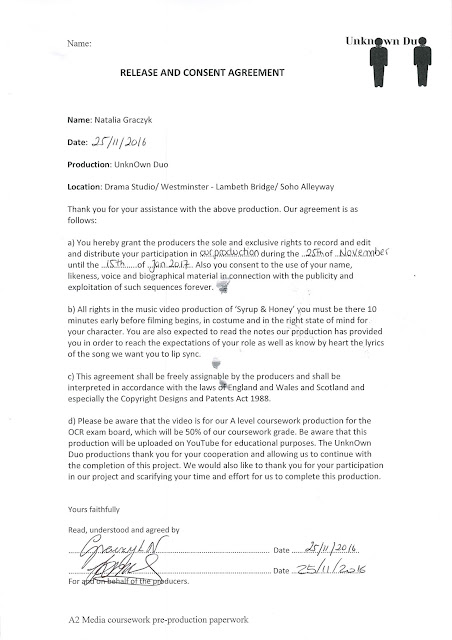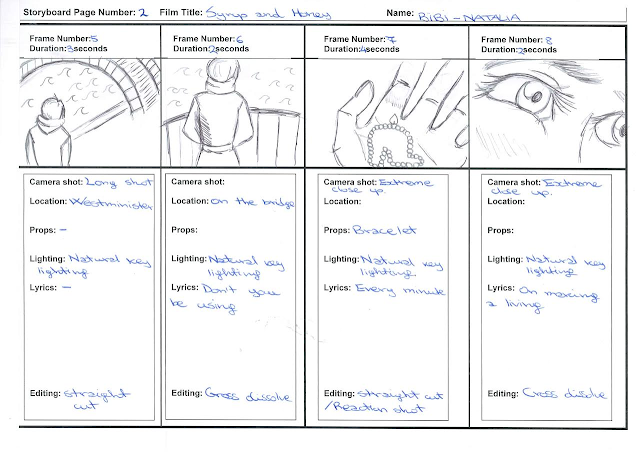Album name: China White: We have decided to call our album
China White as we believe the name is short and mysterious and can relate to
the album as we believe that the songs within the album will evoke confusion
and curiosity from the audience. We also decided to go with 'China White'
because it is a nick name for a drug which connotes to the drug abuse the
artist experienced and is a consistent theme within our products.
Release date: 14th February 2017: We have chosen our release
date to be the 14th of February 2017 because it’s the day were couples enjoy
their day together, meaning that the song that touch up on themes such as love,
relationship etc. will be more appropriate and meaningful for the target
audience. Also by choosing to release the album on this day it will come after
the press campaign and TV launch which will all be important campaigns in
ensuring that our album and artist are recognised, and encourage the target
audience to look forward to the album release- there will be hype surrounding
it. Choosing to release the album in the middle of the month allows us time to
advertise it properly allowing the audience to anticipate the artist’s newest
songs, causing them to wait in suspense.
Available to download:
We have decided to use the well-established download sites /apps
including; ITunes, Spotify and Tidal as these are globally recognised by a mass
audience and will therefore allow our artist to become more successful despite
being a niche artist. We have also decided to make the songs available to
download from various sites/apps as the mass audience use different ones,
therefore, in order for our album to sell, it is vital that we can offer a
variety of download options for the audience, encouraging them to download the
album.
Key singles: We have decided that China White, Cloud 9 and
Black Beauties will be our three key singles, including “You Complete Me''
which is the ultimate key single, considering that we created a music video to
it. 'Black Beauties' is a song that appeals to a mainstream audience, and can
be relatable due to the themes it includes, including love and abuse. ‘Cloud 9’
is the most unique song out of her singles, as it is different in that the
artist promotes niche themes which is reflected through the lyrics and the
theme of morality which is a debatable and individualistic topic.
Explicit lyrics label: No - We will not be including an
'Explicit lyrics label' as the songs within the album do not contain any
upsetting language. This is common within the indie genre and generally it is
uncommon for artist to use such expressions because of its target audience and
general audience expectations.
Setting of image: We will capture the images in dark
locations, such as against black walls, behind a green screen, and then we will
apply a background that highlights the dark atmosphere to reflect the mystery
and tension that is expressed within the album. We also include images of wine
and cigarettes to emphasise the addiction of the artist and what she is going
through. It is vital that the setting of the image is effective and fits in
with the rest of the album information and images to ensure there is
consistency throughout the advert.
Costume hair and make-up of the artist: We plan on using a
black coat and boots to further emphasise her class. Additionally, we want the
artist to dress like a classy woman who is clearly financially stable and
doesn’t lack money/ possessions etc. This will create a sense of superiority
and intimidation from her and the audience will admire and aspire to be like
her. The character will mainly wear dark clothing to convey her depressing
thoughts and addiction to drugs. She will wear a winter coat, to show that she
is longing for ‘warmth’ from others but also protection from the situation she
is in. Sarsha will also wear a red lipstick and a light eye makeup which will
be smudged on her face to show her vulnerability and unconventional beauty. It
also helps to portray her addiction which is common of indie adverts as they
don’t use make up to glamourize the artists. Stereotypically having blond hair
shows innocence and vulnerability, therefore we decided that the main artist
should be blonde to draw an audience response.
Cinematography: For our advert we decided to take a medium
long shot of our artist. This is because it will help to convey the mood of the
album through her body language but at the same time clearly portray her
smudged make up which will give the audience a deeper insight into her life and
her character. A medium close up will not glamourize her which is conventional
for an indie artist who rarely ever use their looks to attract audiences,
unlike the popular and mainstream artists today.
Lighting and colour: We intend to use low key lighting to
convey the sad and miserable mood of the album and dangerous side effects of
drugs which is the main theme of our product. However, we will use top lighting
to make the artist seem vulnerable, especially due to her addiction. It will
also show consistency as in the video the artist will stand under a lamp to
hint prostitution which creates deeper meanings for the audience.
































